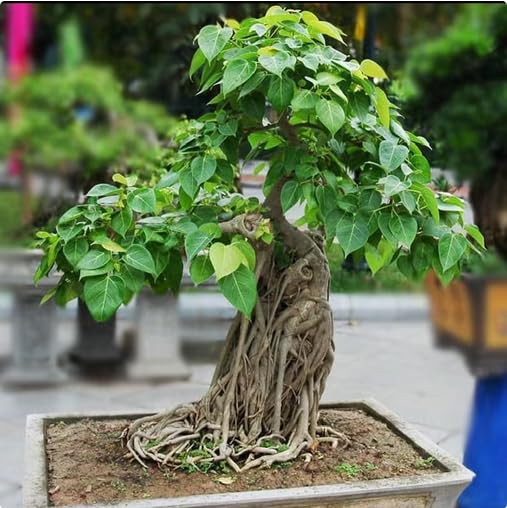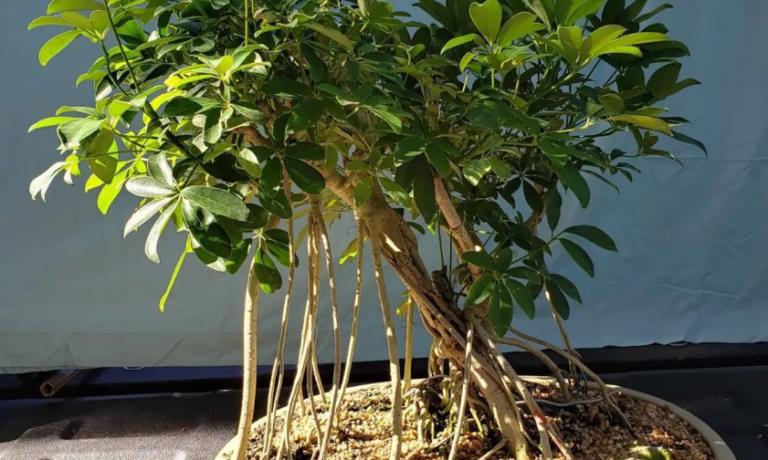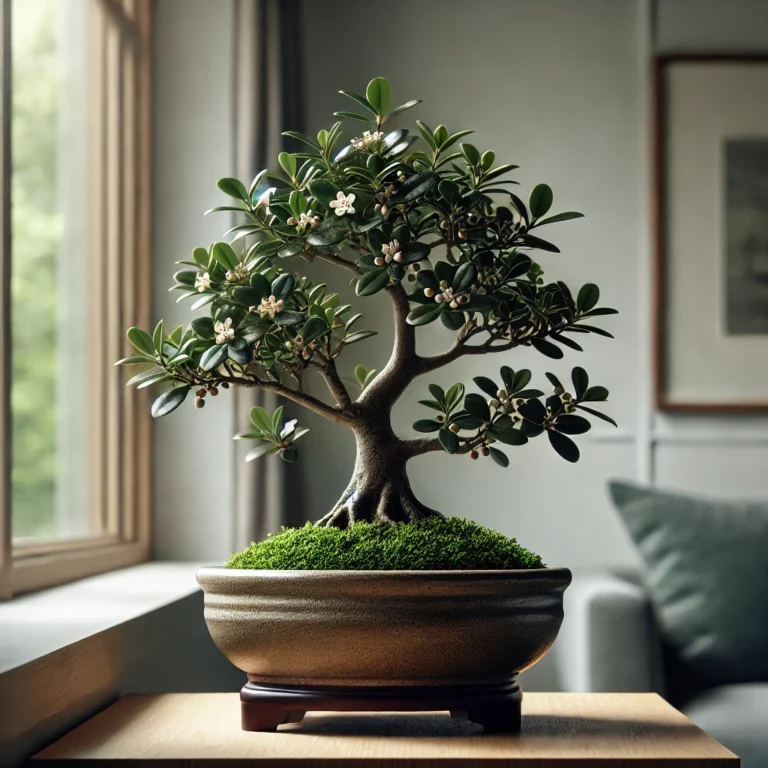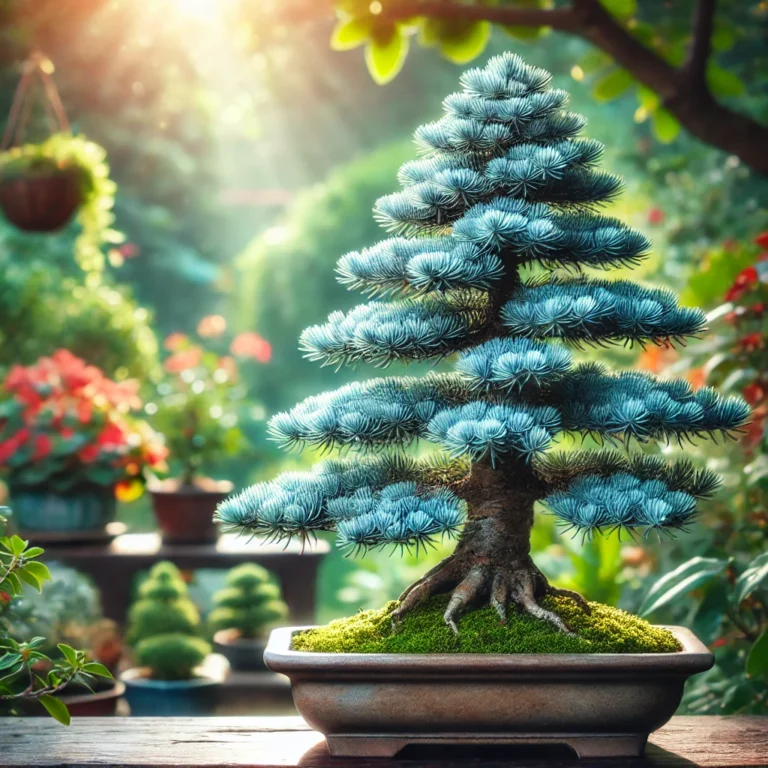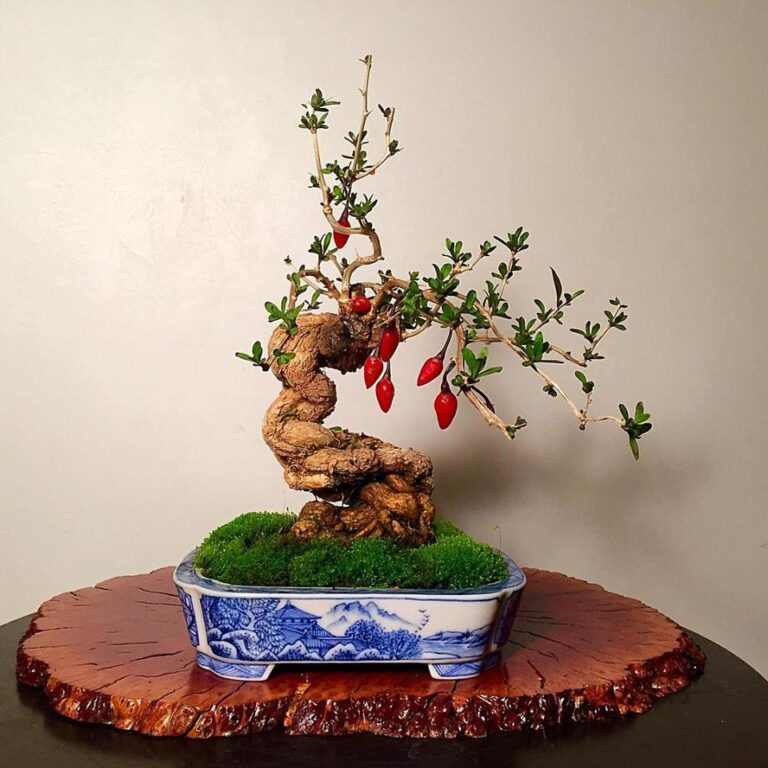Ficus Religiosa Bonsai: A Comprehensive Guide to Growing and Caring for the Sacred Fig
Ficus Religiosa, commonly known as the sacred fig, Bodhi tree, or peepal tree, is revered for its spiritual significance and aesthetic appeal. Native to the Indian subcontinent, this tree is sacred in many cultures, especially in Buddhism and Hinduism, symbolically linked to enlightenment and wisdom. Ficus Religiosa bonsai offers a unique blend of beauty, tranquility, and spiritual symbolism, making it an ideal addition to homes, offices, and meditation spaces. This article will cover everything you need to know to successfully grow and care for a Ficus Religiosa bonsai, from understanding its requirements to handling common challenge
What is Ficus Religiosa?
Ficus Religiosa is a species of fig tree belonging to the Moraceae family. In its natural habitat, it can grow up to 30 meters (98 feet) in height. The heart-shaped leaves and long petioles make it a lovely tree. Known as the Bodhi tree, it is said that Siddhartha Gautama attained enlightenment under a Ficus Religiosa, lending it great significance in Buddhism.
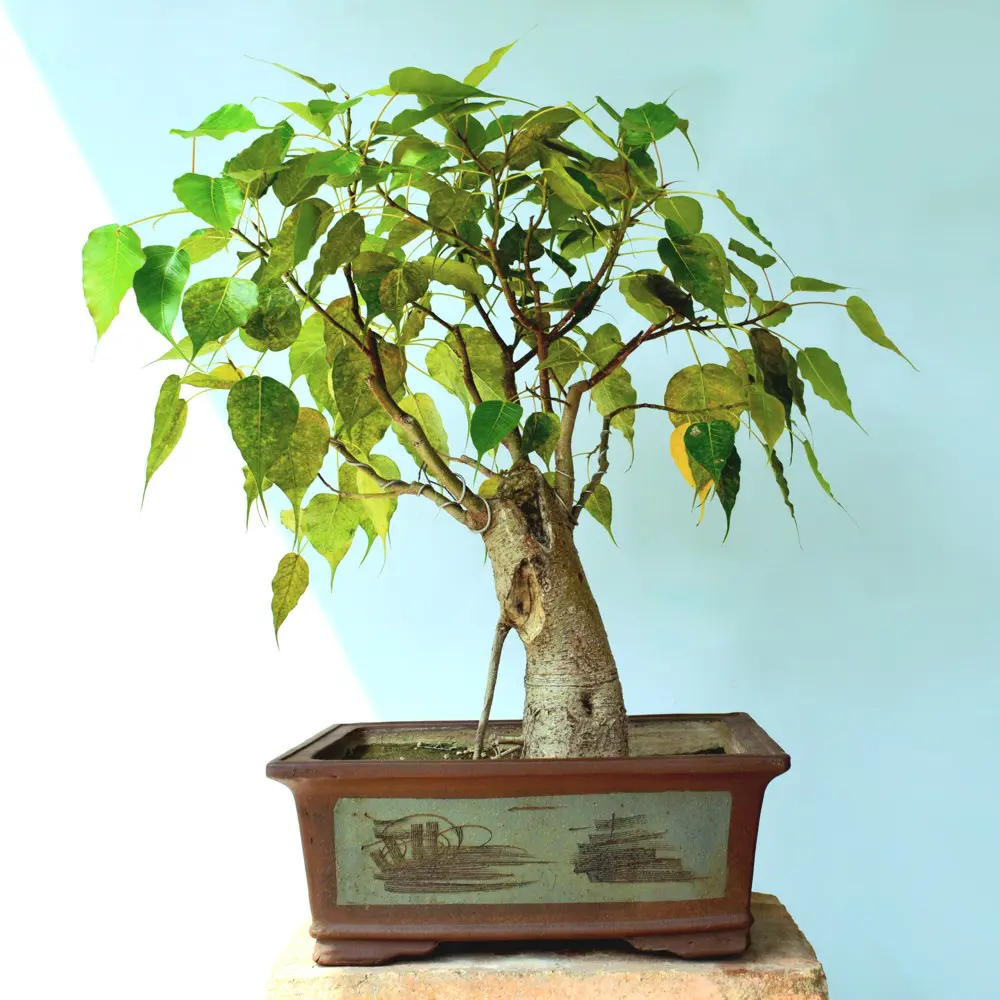
Key Features of Ficus Religiosa Bonsai
Creating a Ficus Religiosa bonsai means cultivating a small, manageable version of this revered tree. Here are some unique features of Ficus Religiosa bonsai:
- Distinctive Leaves: The heart-shaped leaves with pointed tips are a hallmark of this bonsai, adding to its ornamental appeal.
- Aerial Roots: Like other ficus varieties, Ficus Religiosa can develop aerial roots, giving it a unique, aged look.
- Spiritual Connection: Ideal for meditation spaces, this bonsai is believed to bring peace and spiritual growth.
- Adaptable Growth: With proper care, Ficus Religiosa bonsai can be grown indoors or outdoors, making it a versatile addition to any space.
How to Grow Ficus Religiosa Bonsai
Starting a Ficus Religiosa bonsai from seeds or cuttings can be rewarding, though slightly challenging. For beginners, it may be easier to purchase a young Ficus Religiosa plant to start the bonsai process. Follow these steps:
Seed Propagation
- Collect Seeds: Gather fresh seeds from a mature Ficus Religiosa tree.
- Soak Seeds: Soak seeds in water for 24 hours to increase germination rates.
- Planting: Use a well-draining soil mix and plant the seeds at a shallow depth.
- Watering and Care: Keep the soil consistently moist, and provide indirect sunlight for optimal germination.
Propagation from Cuttings
- Select a Healthy Cutting: Choose a healthy, semi-hardwood cutting from a mature Ficus Religiosa tree.
- Use Rooting Hormone: Dip the cut end in rooting hormone to enhance root growth.
- Planting: Plant the cutting in a well-draining soil mix and keep it moist.
Bonsai Potting and Pruning
Once your young Ficus Religiosa is growing well, you can start the process of bonsai potting and pruning:
- Repotting: Transfer the plant to a bonsai pot after it reaches a suitable size. Trim the roots slightly to control growth.
- Pruning: Shape the tree using regular pruning and wiring techniques, focusing on creating an open canopy to display the unique leaf shape.
Ideal Growing Conditions
To ensure healthy growth, create an environment that mimics Ficus Religiosa’s natural habitat.
Light Requirements
- Full Sun: Ficus Religiosa thrives in bright, direct sunlight. If kept indoors, place it near a south-facing window.
- Partial Shade Tolerance: Though it prefers full sun, it can tolerate partial shade.
Temperature and Humidity
- Temperature: The ideal range is between 60-85°F (15-29°C).
- Humidity: High humidity is preferred, so misting the bonsai regularly can help maintain optimal conditions, especially in drier indoor environments.
Watering, Pruning, and Fertilizing
Proper watering, pruning, and fertilizing are essential for maintaining a healthy Ficus Religiosa bonsai.
Watering
- Consistent Moisture: Keep the soil consistently moist but avoid overwatering.
- Soil Check: Allow the top inch of soil to dry out between waterings.
Pruning
- Shaping the Bonsai: Prune regularly to shape the bonsai and encourage new growth.
- Leaf Pruning: Trim larger leaves to maintain the bonsai’s aesthetic and encourage smaller leaf development.
Fertilizing
- Frequency: Use a balanced, slow-release fertilizer every 4-6 weeks during the growing season.
- Type: A bonsai-specific fertilizer with balanced nitrogen, phosphorus, and potassium will encourage healthy growth.
Common Issues and Solutions
Leaf Drop:
- Cause: Stress from under-watering, over-watering, or sudden changes in environment.
- Solution: Ensure consistent watering and avoid moving the bonsai frequently.
Pest Infestation:
- Common Pests: Aphids, scale insects, and spider mites.
- Solution: Use insecticidal soap or neem oil as a natural remedy, and inspect the plant regularly for signs of pests.
Yellowing Leaves:
- Cause: Could indicate over-watering or nutrient deficiency.
- Solution: Check soil moisture and fertilize as needed.
Benefits of Having a Ficus Religiosa Bonsai
Adding a Ficus Religiosa bonsai to your space can provide numerous benefits, both aesthetic and spiritual.
- Aesthetic Appeal: Its unique leaves and aerial roots make it a focal point in any room.
- Air Purification: Like other ficus trees, it helps purify indoor air, removing toxins and improving overall air quality.
- Stress Reduction: Studies show that indoor plants can reduce stress, making Ficus Religiosa bonsai a calming presence.
- Spiritual Growth: Often associated with spiritual awakening and enlightenment, this bonsai is ideal for meditation and reflection spaces.
FAQs about Ficus Religiosa Bonsai
Q1: Can Ficus Religiosa bonsai be kept indoors?
A: Yes, Ficus Religiosa bonsai can be grown indoors if provided with sufficient light. Placing it near a sunny window and using a grow light during winter months can help maintain its health indoors.
Q2: How often should I water my Ficus Religiosa bonsai?
A: Watering frequency depends on the humidity, temperature, and season. Generally, water when the top inch of soil feels dry, ensuring not to overwater as it can cause root rot.
Q3: How fast does Ficus Religiosa bonsai grow?
A: The growth rate is moderate, and regular pruning helps control its size. With proper care, it can grow a few inches each year.
Q4: What is the best soil mix for Ficus Religiosa bonsai?
A: Use a well-draining bonsai soil mix, ideally composed of akadama, pumice, and lava rock. This mix promotes root health by preventing waterlogging.
Q5: Can I use regular potting soil for Ficus Religiosa bonsai?
A: Regular potting soil may retain too much moisture, risking root rot. A bonsai-specific mix with improved drainage is preferred.
Q6: How do I protect my bonsai from pests?
A: Regularly inspect your bonsai and, if pests are spotted, use insecticidal soap or neem oil. Maintaining overall plant health also helps prevent infestations.
Conclusion
Ficus Religiosa bonsai is more than just an ornamental plant; it symbolizes peace, spiritual growth, and connection to nature. Whether you’re a bonsai enthusiast or simply want a plant with historical and cultural significance, this bonsai offers both beauty and depth. With proper care, your Ficus Religiosa bonsai will flourish, bringing tranquility, natural beauty, and positive energy into your life.
By following these tips, you can cultivate a Ficus Religiosa bonsai that’s not only healthy but also enhances the ambiance of your space. Embrace the journey, and enjoy the serene beauty this bonsai brings!

